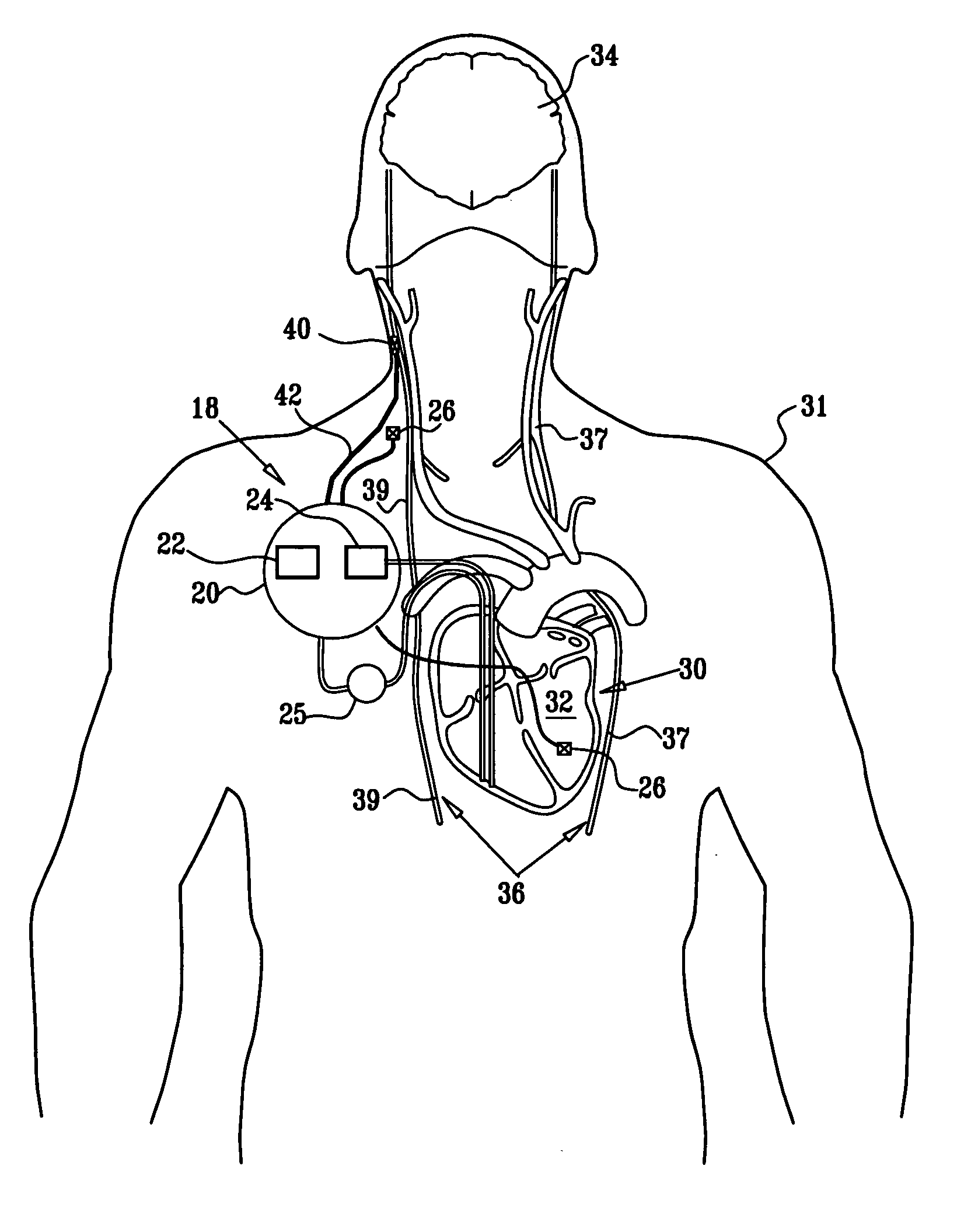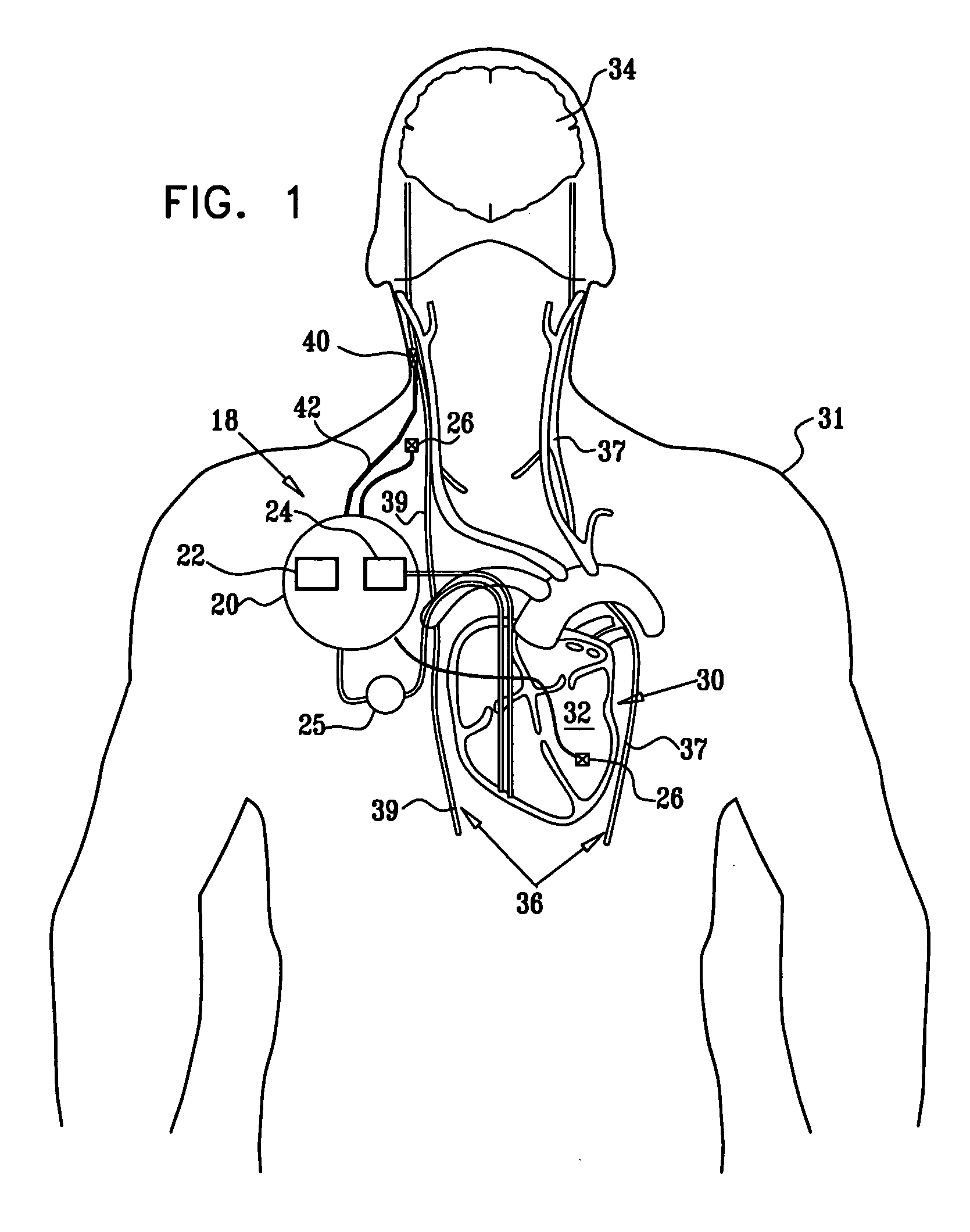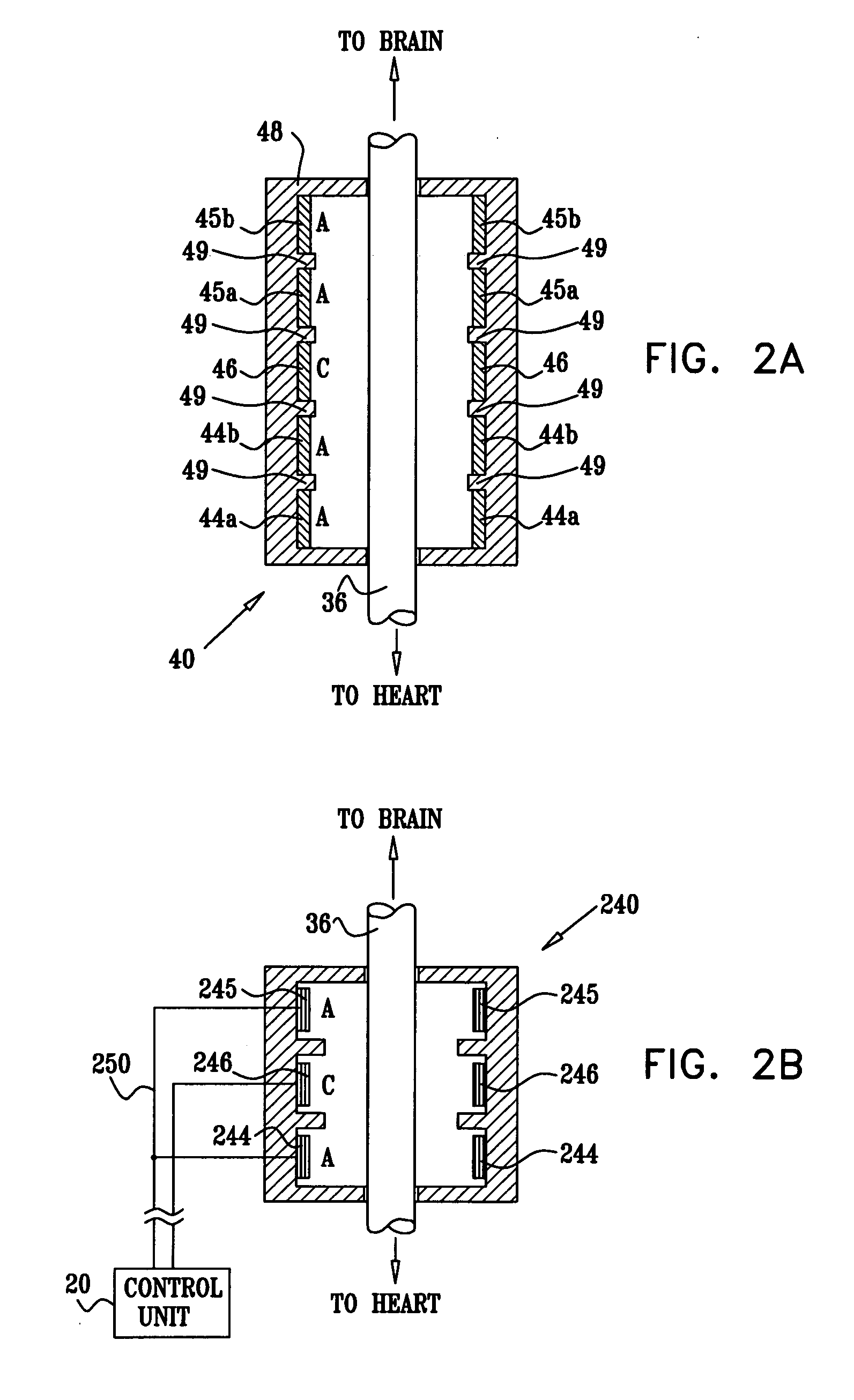Selective nerve fiber stimulation
a nerve fiber and selective technology, applied in the field of selective nerve fiber stimulation, can solve the problems of affecting the growth of small-diameter fibers, and achieve the effects of reducing heart rate variability, increasing variability, and modifying the heart rate variability of the subj
- Summary
- Abstract
- Description
- Claims
- Application Information
AI Technical Summary
Benefits of technology
Problems solved by technology
Method used
Image
Examples
Embodiment Construction
[0440]FIG. 1 is a block diagram that schematically illustrates a vagal stimulation system 18 comprising a multipolar electrode device 40, in accordance with an embodiment of the present invention. Electrode device 40 is applied to a portion of a vagus nerve 36 (either a left vagus nerve 37 or a right vagus nerve 39), which innervates a heart 30 of a patient 31. Typically, system 18 is utilized for treating a heart condition such as heart failure and / or cardiac arrhythmia. Vagal stimulation system 18 further comprises an implanted or external control unit 20, which typically communicates with electrode device 40 over a set of leads 42. For some applications, control unit 20 drives electrode device 40 to (i) apply signals to induce the propagation of efferent nerve impulses towards heart 30, and (ii) suppress artificially-induced afferent nerve impulses towards a brain 34 of the patient, in order to minimize unintended side effects of the signal application. Alternatively, control uni...
PUM
 Login to View More
Login to View More Abstract
Description
Claims
Application Information
 Login to View More
Login to View More - R&D
- Intellectual Property
- Life Sciences
- Materials
- Tech Scout
- Unparalleled Data Quality
- Higher Quality Content
- 60% Fewer Hallucinations
Browse by: Latest US Patents, China's latest patents, Technical Efficacy Thesaurus, Application Domain, Technology Topic, Popular Technical Reports.
© 2025 PatSnap. All rights reserved.Legal|Privacy policy|Modern Slavery Act Transparency Statement|Sitemap|About US| Contact US: help@patsnap.com



